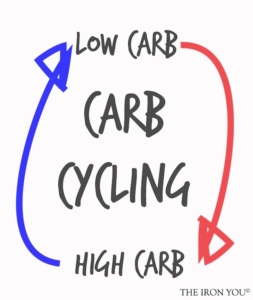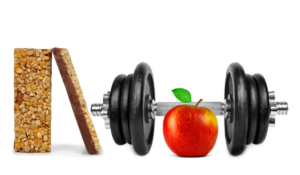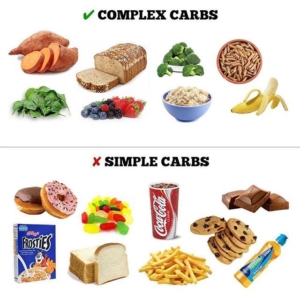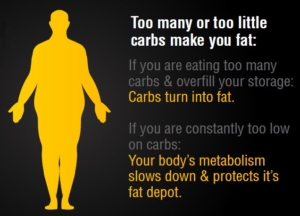If are you at all interested in nutrition and exercise, you have come across the term “carb cycling”. Essentially, carb cycling incorporates low carb days with carb loading days throughout the week. With the popularity of low to no carb diets, carb cycling is a healthy alternative that still supplies your muscles with the glycogen they need to perform and helps you to stay away from the side effects of no or low carb diets (increased hunger, lower metabolic rate, difficulty focusing, etc.).
How Carb Cycling Works:
- Carb cycling manipulates insulin to minimize fat storage and maximize muscle synthesis.
- Carbs boost serotonin production, so eating carbs boosts your mood. Carb cycling regulates serotonin levels and curbs cravings.
- Leptin acts as a feedback mechanism in the hypothalamus to signal satiety. In carb cycling, when leptin begins to recede to the point of increasing hunger and slowing the metabolism, a high-carb day is in place to help reset it.
Step One:
Plan your high carb (1-1.5g/lb) days for the high-intensity days at the gym or for your long runs. Your body will burn the carbohydrates and use them as fuel. On the higher carb days, you also want to limit your fat intake, to make room for the extra calories you will be consuming.
Concentrate heavily on hitting your protein goals (.5-1g/lb of body weight) on both high and low carb days. Protein is the foundation of carb cycling.
Plan your lower carb (.5g/lb) days for your rest days or your lower intensity days (short jogs, yoga, light weight lifting). Your body can store extra carbohydrates in your fat cells, so by eating lower carbohydrates on your rest days, your body will turn to fat as fuel.
Most people who carb cycle will incorporate a day of no carb into their weekly plan. However, most of the readers of the Mud Run Guide are athletes in training and it very important to always have a store of glycogen in your diet. So for those purposes, this protocol does not incorporate “no carb days”.
Step Two:
Eat the correct types of carbs. Load up on complex carbs (peas, beans, whole grains, vegetables) these take your body a long time to break down. Limit your simple carbs (candy, maple syrup, sugar, corn syrup). Although fruit is considered a simple carb, it has many antioxidant properties and is full of fiber. Fruit is a great thing to add to a pre-workout meal since your body can break it down fairly quickly and use it for energy.
Step Three:
Set a weekly caloric goal and stick to it. This takes some planning, but it will help you to avoid weight gain and promote fat loss. Let's say your body requires 2,000 calories per day and you are hoping to lose 1lb a week. 1lb=3500 calories. A 500 calorie deficit per day would equal 1lb of weight loss per week. So, you would consume 1500 calories per day or 10,500 calories a week.
On your high carb days, you will consume about 300 calories more than a usual day, so 1800 calories. On your low carb days, you consume about 300 calories less, so 1200 calories.
Let's say you have three high carb days and two low carb days. (1800+1800+1800+1200+1200+1200+1200=10,200 weekly calories).
Expectations:
When you first begin to carb cycle, your body may retain some water weight during your higher carb days. Initially, you may also feel bloated and weak. Give your body a week or two to get used to the caloric and macro adjustment. If you are still feeling these symptoms after week two, carb cycling might not be for you.
Conclusion:
Carb cycling is a great way to fuel your body, build lean muscle mass, improve workout performance, encourage weight or fat loss, increase energy and prevent weight loss plateaus. However, not everyone will benefit from this plan. Be sure to listen to your body and talk to your doctor or dietician before beginning any nutrition based regimen.
This article is meant for informational purposes only. Before embarking on any change in your nutritional program consult your doctor or nutritionist to see what is right for you.






Leave A Comment